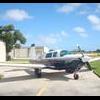Leaderboard
Popular Content
Showing content with the highest reputation on 08/28/2017 in all areas
-
2 Our Fathers, 2 Hail Mary's and a trip around the pattern for you. Go in peace.4 points
-
My wife sure thinks so. But geezerpilot just doesn't have the same ring. Maybe dotageaviator?4 points
-
After lurking these forums and bugging many members for two years I finally got my first plane back home. My wife and I were super happy after the trip, it's a lot of fun to really be crusing across the ground and having the capability of a real cross country Thanks for all the help, especially from MB65E!3 points
-
3 points
-
Each category of airplane will have its rough ones and cream puffs. An Ultra nice C,E, or F figure $60k plus. A cherry nice J or K will be above 150k Finally, to touch a nice long body will be near 200k. Anything else and you will need to break out the pen and paper and go to town. Most want a 200k airplane for $110k. I'd start at the top and work down because it's really hard to make a 40k airplane into a 60k airplane. Waaaay more than the $20k it looks like on paper. -Matt3 points
-
This is the first video based on the footage I received. Hope you enjoy it.. Oscar3 points
-
1) Frogs get frog prices. 2) Princes get prince prices. 3) Just because 'they' advertise a prince price, doesn't mean it isn't a frog. PPI to help determine value... 4) knowing the owner always helps. Sometimes he isn't going to be available... Is he on MS? 5) knowing the plane can be helpful. Is it on MS? 6) Before getting excited about buying a particular plane... photos, logs and FAA details should be known. 7) Going to See the plane in person is next on the list... 8) traveling to see an airplane gets expensive. 9) expect to match the costs of the acquisition to your budget. Travel, PPI, TT, delivery... 10) if your budget to buy a plane is 40amu, it is a challenge to spend 10amu on acquisition costs... 11) Then expect the elevated first year expenses... 12) know the risks involved in taking chances... sometimes it may be worth the risk, sometimes it's not... 13) don't be lulled into buying in over your head. 14) Compare to your other life experiences... if you spend your entire savings on a (car, boat, plane, or house) where do you get the money to operate, maintain or keep it? What happens when something breaks or wears out? 15) Stay away from the lowest priced planes in each category... when looking at Cs and you find an E in the same price range.... when looking at Es and a J is in the same price range... don't fall for it. 16) the economy has been improving for a decade, unemployment has been going down as well. People aren't fearing losing their jobs like they were a few years ago. 17) competition on buying used things continues to strengthen. 18) what would happen if you paid more, and got more at the same time? 19) buying expensive things is expensive. 20) buying your first plane... stay well under budget. If it works out well, move up... fortunately you have MSers that don't mind helping you out when able... If this was easy, everyone would do it. If this doesn't make sense automatically, you may fall for the same trap you have been in already. Best regards, -a-3 points
-
Nothing is a given. The engine may or may not need to be overhauled, the interior is fine for a family traveling aircraft, the instruments are old but usable. It will require an ADS-B upgrade ($3000 to $7000) within a few years. For someone looking at F or J's in the $50K range it is a staring point. It looks like it has been well cared for and kept hangared. I would figure at least $15k for reserves depending on how much it has flown. Recognize you could end up needing to overhaul the engine as part of the risk. On the upside you could potential fly 500 hours or more before you need to do the overhaul. You will hear the naysayers tell you that the engine is definitely dead, the interior must be upgraded to leather and you must have a full glass panel to fly the way they thing you should. As long as the engine is fine all the rest wont make the plane fly any better or faster. A $200 tablet and a Stratux unit will give you all that you need to fly VFR safely. Bottom line is it is a J, and it is a great base airplane to fly and improve over the long haul if you can afford to take the risk.3 points
-
If that's true. Maybe what I really need is more patience. I might not have done all the homework yet- and the right plane might not even be listed yet. This is actually very encouraging. Thank you.2 points
-
If it were me I would be looking hard at that 201 that @jclemens restored. Looks like a solid all around airplane.2 points
-
Yeah, you suck. Thank goodness I've never made any mistakes flying.2 points
-
And this is the allure of aviation. The attempt to achieve perfection. Sent from my iPad using Tapatalk Pro2 points
-
2 points
-
Sensorcon did verify that the unit will continue to operate after the EOL. They say the accuracy drifts +/- 2ppm every 6 months, so they could be +/-8ppm off at the 2 year mark. Cheers, Dan2 points
-
I put charts between the front seats; approach plates I turn sideways and put on the floor at the bottom of the console. When I am through with one for a given flight, I move it to the floor behind the right seat. Just put a post it on one of the pages you expect to need, sticking out like a tab for easy opening. I stack them in intended order of use: plates is first on top; charts are first to the right. My C has an air vent in the lower pedestal, and air comes out of if when I extend the "Cabin Vent" knob on the panel. Later models seem to have moved this control to the right side of the pedestal. P.S.--feel free to ignore the ipad crowd. I personally find the electronic charts to be great for preflight planning, but a pain to use in the air as they don't show very much when zoomed in to be readable.2 points
-
2 points
-
I remembered that post as well. Now I realize I didn't comment on that after your quoting your post. I see I forgot now, but I was intending to add to your comments that IF that was a problem in this case the OP should find the emergency gear extension will not engage from the brass clutch being chewed up and thus the importance of extending it mechanically after raising it electrically.2 points
-
Dan has graciously agreed to administer the CO detector calibration for the Mooney Summit. I have purchased a calibration kit from Sensorcon Sensorcon is donating a couple of CO detectors to be included in the Mooney Summit raffle. Thanks @DEB @DANM20C for running point and making this all happen for the Mooney community!2 points
-
And what is wrong with the paint job? If it is free of nicks then a good detail would save a lot of money.2 points
-
As a second generation pilot, I had the benefit of tagging along with my Dad when he was shopping for his airplanes. When we lived in Southern California, this involved literally hundreds of trips to the many airfields within driving distance from where we lived in Santa Monica and later near Torrance. My Dad was very particular and under his tutelage, I learned a lot from him. Dad would like to find out where the airplane was based and, ideally, would check it out first without the owner being present. He was good that way in that he could usually tell within five minutes of looking at an airplane whether he had any interest in it or not. He didn't want to waste the owner's time if he had no interest in the airplane. I was a part of this process that went on for several YEARS before he found a beautiful 1964 C model Mooney that he would buy and we would fly from Torrance to Philadelphia and back again. What made it even more special was that I was the one who spotted the Mooney with the For Sale sign in the window. It was a Sunday afternoon and we had just finished an early family dinner at Skytrails Restaurant. We took the drive North from the restaurant along the West side of Van Nuys Airport and I spotted N7106U parked next to the ivy covered chain linked fence. It was 1970 and I was 13 years old but I remember it like it was yesterday. I think it is very difficult to effectively shop for and purchase airplanes that are far away from where you live. My experience has shown me that there are relatively very few airplanes that are for sale at any given time that you would really want to own. There are always plenty of projects out there just waiting for someone to come along and pay the "big bills", as Dad used to call them, but very few airplanes that are sharp looking inside and out, with low time on a good engine and up to date avionics. That is pretty tough to find and when you do, it usually comes at what appears to be a premium price and they usually don't stay on the market very long. I said "appears to be a premium price" because after you take on a project and do the paint, interior, glass, soundproofing, avionics, etc...and deal with the aggravation, inconvenience and expense, that premium priced airplane will start to look a lot more reasonable. We are all different and have different priorities but buying a used airplane is a challenging and expensive proposition. It was so even back in the 1960s and 1970s when there were more airplanes around, more airplanes being produced and more airports to shop at than we have today. I have been fortunate to have owned two different airplanes and to have been an owner for 20 years and counting. I can tell you that it is irrationally expensive and sometimes very frustrating but still a very personally rewarding experience. I sincerely wish you great success with finding your airplane!2 points
-
There actually is no sensor to monitor the emergency gear extension handle. If it is not secured allowing it to engage its going to stop gear retraction by popping the actuator motor circuit breaker. There is also no squat switches on the K. It'll have an airspeed safety switch and if that has failed, then the emergency gear extension red button should be illuminated red and pressing that button will by-pass it and raise the gear. Anyway @ziggysanchez appears to have a very good understanding of his gear system and @StevenL757 suggestion to put the plane on jacks and exercise the gear electrically up and mechanically/manually down is spot on. I don't don't know what it is, but the OP seems to have ruled out the simple stuff so far. But I would first get under the gear, right after getting it jacks, and it give it look over right away as you may well see the problem or damage before you exercise it. Also if you don't have two people to allow someone to watch it closely as the other raises it, I would move it a little at time pulling the breaker to check on it for signs of trouble to minimize risk of more damage in case you have something binding that was missed in the visual. Its really going to take dropping the belly pan too to give it a full visual inspection before manipulating it but the most likely areas of binding are in the gear wells. Good luck!2 points
-
Hi, An option is to send the 330 to Garmin and have them upgrade it to 330ES for adsb-out, you likely need to add a few wires from the 650's Data buss to the 33O connector to pull in/out GPS data. Do a 91.413 check, fly in controlled airspace, get your FAA report and enjoy.2 points
-
You probably want to buy your own new cannulas. If You don't, your wife will appreciate it. [emoji846]2 points
-
2 points
-
2 points
-
The fact that Cirrus is selling a lot of airplanes might be the only reason that the Chinese company that owns Mooney has been patient. They see that there is a market for new airplanes, but they need to get a sales and marketing department that knows how to sell these things. I wasn't at Oshkosh this year but last year the huge Cirrus booth was packed all the time. The little Mooney area had a few people there. Build 5 Acclaim Ultras and 5 Ovation Ultras and take them to Sun N' Fun and Oshkosh and show them off in different colors, options, interiors - get some enthusiasm building for your product. Have a speaker scheduled every hour including owners talking about how they use their Mooneys. Start to rebuild the cult following that Mooney had for years.2 points
-
This is really a good thing. It makes your decision easy. The tough ones are the ones which are "priced almost right" and have only "a few things wrong".1 point
-
What made you think I took offense? you might be a little too serious objecting to the common use of handles on Internet forums (that's unfortunate) but I certainly didn't take offense about it.1 point
-
Just remember that even though you're spending new luxury car prices you're still buying a 30-40 y we old vehicle. -Robert1 point
-
Just to give you an idea of the hellish cost of avionics, I just went through this. In fact, this airplane closely resembles mine, but we paid more, the engine was ten years old and 1200hrs, we gambled and thought we could get some service from it. we lost on that deal. we went back and forth for the better part of 4 years about a G430, but in the end, we kept rejecting that idea because it was obsolete and install cost is a high part of installing one. Flat rte repairs for the com flip button or the knob, or Garmin's eventual discontinuance of parts made spending 13-14K on a 430 a bad value. (6500$ for 430W, 3K for labor, 2K indicator, 1500 audio panel.). 530W similae, but 1500$ more. We didnt go for it in 2011 and 2017 wasnt looking better, prices were the same. Nope. The iFD540 was a strong contender, actually I preferred it. I went and flew a friend's 201 that had one, and then went and powered up a friend's Cheyenne II and played with the installed GTN750, and the G530 right below it. It took about 5 minutes to determine the GTN750 was it. The 650 has this horrible drag left-right interface for entering fixes, and NFW was that thing going in my panel. Wentworth happened to have a GTN750 for 12,500$, which was twice the cost of a G430W but cheaper than a iFD540, and 4K more than a 530W. Oh, but since everything else was obsolete, this was going to be fun. Both VOR indicators were obsolete, our KMA20 audio panel was giving us problems, the COM2 KX170B worked great but it wont fit in the LH side of the stack, another 700$ to "re-install" it on the RH side of the stack. Now that and the transponder, also obsolete, fill up the RH stack so much we cant fit the Aera660. And the autopilot will do little more than track "direct", which is has always done. So, the SN3308 HSI. Garmin's offerings weren't available, or even forecast, and the King HSI is complicated and hellishly expensive to repair, and since then theyre gotten worse. Aspen is a 12K unit, and it's old tech, its ten years old. We needed an extra hole for an engine monitor, since ours was flaking out. an HSI was needed, and the Sandel seemed to be the only thing cheap. GPSS and the 1C388-3 radio coupler enables the autopilot to fly radius turns and holding patterns. the final straw that broke the camel's back, the GTX345r remote transponder. Wife and I got into several huge fights about this, she was wrong and still she wont admit it Anyways, these things are 7K installed. the GTX335 for 3K deal wasnt even on the horizon. weather and traffic on that huge screen is nice, you dont really need an ipad now. I found a guy on eBay who was in the unfortunate position of owning a GTX345r that was the wrong type for his aircraft, and he couldnt return it. 5K plus sales tax is 5400$ here. I got the transponder for 4600$. 5K now laid in, or 7K in 18mo. Another couple huge fights. I bought the transponder. I'm used to flying glass cockpit jets, 747, 737Ng, stuff like that. Onboard weather radar, ARINC429 turn anticipation LNAV, HSI on glass, real stuff. We're relocating to the east coast soon, and real IFR is going to a regularly occuring event. Anyways, we went from this: to this: to THIS: Here's my old lady collecting yet another air race trophy. The airplane does seem a couple knots faster, the CG is further aft due to the lightened radios in the panel and more remote boxes on the rear shelf. I even got into the soup on the way back from the avionics shop, shot some DME ARC approaches to an ILS and even collected my 500$ rebate. It was a non-event. I removed all the radios and all the old wiring, installed the KG102 remote gyro, the KMT112 flux gate, KN62A DME, and all the wiring (bundle 2" in diameter) was brought to the front. The avionics shop cut me a real deal on labor. NOTHING was bought new, it was all used. We sold everything that came out of the aircraft for market value, and applied the 500$ ADSB rebate too. And when the dust settled, it was 35,500$. Shocking... and this is just a mid level upgrade. But we have a large screen current production GPS, slimline, modern COM/NAV 2, remote ADSB in-out transponder with wx/trafffic on screen, HSI and GPSS roll steering. And I only had to rip the band-aid off once. This is counter to my usual methods...1 point
-
Ignore this post, it doesn't match the hardware in the photo... CHTs use thermocouples... changing voltage with temp. OilTs use thermistors... changing resistance with temp. You don't need to run the engine to see the CHT work. It will just read the temp as it sits... essentially OAT. Best regards, -a-1 point
-
I bought my 64E in 1989. The previous owner had upgraded to a Lance, and moved the Mooney to an outdoor tie-down so the Lance could live in a hangar. A week before I purchased, a tornado blew thru and the hangar roof collapsed on the Lance, breaking off the vertical stabilizer/rudder. The Mooney was undamaged.1 point
-
Here was this morning: So I got cabin fever and decided to drive down and check out the airport (KBPT). Stopped in the hangar to see just a bit of water, but no Mooney. The Mistress is in <wait for it> Houston! Had a text from my IA, she is high and dry <whew>.1 point
-
In 2005 when Wilma came to South Florida, the hangar doors were blown in, hitting the spinner and damaging the left aileron. The insurance company paid for a tear down and replacement of the aileron. Moral of the story is, even a hangar won't always offer enough protection.1 point
-
1 point
-
Thanks for the tips guys, I appreciate it. And yes I do want new cannulas :-)1 point
-
A little cheaper from Spruce. http://www.aircraftspruce.com/catalog/inpages/rochcht.php?clickkey=42441 point
-
I have my reasons.... I want electric gear and quadrant controls. Thanks for the helpful responses. 14 volt system it is. Gerbil1 point
-
It may be, but check the numbers stamped on the side for exact model, btw it's a thermistor, a thermocouple (TC) has 2 wires.1 point
-
You probably already have it, but don't forget to include the critical pulse oximeter and set flow based on its telling you.1 point
-
65% power will give you a specific true airspeed at a specific density altitude. Your engine doesn't care if it gets to 65% power ROP or LOP. If you're flying 65% power ROP, flying 65% power LOP will get you the absolute identical true airspeed on a LOT less fuel with lower intra-cylinder pressures and essentially the same temperatures you see ROP. You can fly 30" MP, 2500 RPM and 10.0 GPH for 65% power LOP and get the same airspeeds you get now. It is the magic of LOP1 point
-
1 point
-
I'm the sedan with the dark tinted windows that drives slowly by your house every night at 8pm.1 point
-
1 point
-
I would like to monitor 121.5, but my comm 2 has a 'feature' that opens the squelch full time when you tune to it.1 point
-
In my past I have rebuilt car engines, rebuilt manual and automatic transmissions, replaced rear ends and restored entire cars (MGB w/ Stage 5 engine going back together at the moment), but I have never worked on an airplane before my Mooney. Everything I have done on it has been with the approval and sign-off of my mechanic (A&P/IA) or under his direct supervision. Heck, I even paid him to watch me do my first oil change to make sure I did it right. And I hate checking the screen, but he said if I was going to do it, I had to do it all. He had me do several tasks during my last annual and checked behind me to see they were done right. I think I could probably do much more than I did, but I am unwilling to go outside of the FARs or common sense. Most mechanics in business for as long as many I know, have earned the respect of their clients by doing the best work they can for a reasonable price. But every one I know tells me to take a test flight to see if anything is not like it should be, and anything I found was corrected without a problem. I know my mechanic is a better mechanic than I am a pilot.1 point
-
One thing, that hasn't been mentioned much, is a critical factor for me. I love mooney and all, but when it became a Chinese company and all intellectual property exported to China, that is a complete non-starter for me. Once that happened, I don't care what the product is. I'll never buy into that. After having done international business for 15 years and seeing that crap happen more and more, it is touchy to me. I'm sure that many of those buying new planes must consider this as well.1 point
-
You're going find a number of owners who don't know or don't care what it costs to own and operate an aircraft. It is a smart question you aware asking because if you don't have the funds to operate the plane, it will end up being a burden on your finances. Don sounds like he is doing the math and the $30k sounds about right. I can tell you owning an F model is costing me between $20k and $28k depending on the hours flown. My numbers include reserves for engine and avionics upgrades. As Paul mentioned, you can buy more airplane than you can afford to operate. The fixed costs between the models will have some variation (like for insurance) but some will be fixed (hangar, database updates, etc.). The other variables will be what you will want to get better recon on. Fuel burn in a Bravo will be more, but time in flight will be less. Calculating out the $ per hour based on all the variables will help you understand how much it will cost you to fly X number of hours. I have a spreadsheet I can email you that show the stuff I track. PM your email if you are interested. Sent from my iPad using Tapatalk Pro1 point
-
The purchase price and the price of ownership are two completely different things. No matter what you pay for it, even if someone gives it to you, keep in mind you are still maintaining a $700,000+ airplane - since that's would it would sell for new today. The parts and labor prices reflect what a new airplane costs not what you paid for a 20 year old airplane. And of course since all of those systems on the airplane are 20+ years old, in some cases close to 30 years old, they will need some work in the first few years of ownership. What is for sale on the M20M market are a lot of airplanes with nearly TBO engines so buyers are hesitant about buying at say $150,000 - $200,000 and then thinking about $50,000 - $75,000 in an overhaul, rebuilt or reman. The M20M costs at least twice as much as the M20J when it comes to engine overhaul and fuel per mile will be 40-50% more (the J doesn't go nearly as fast so don't just compare fuel flow). You have two more cylinders so when it comes time to do a top end overhaul, usually half way through the engine life it will be 50% more. Some people don't have to do a top on on the J, but most do on the M, since turbo charged airplanes run hotter and are operated in more harsh environments. The exhaust will be more expensive to keep up on the M20M - and make sure you do. Other than the turbo charger, which in the total cost really doesn't mean that much, the rest of the systems are all about the same on the two airplanes. (Since the M is faster, one hour in the M and you are covering say 190 nm, one hour in the J and you are covering 150 nm. So even though the M engine costs a lot more, over 2000 hours it's covering 380,000 miles, while the J is covering 300,000 miles). Also if your time is worth something to you, there's a benefit in getting there faster that only you can quantify.1 point
-
This then comes to the question of CapEx vs. OpEx. I recently made this same decision. The prices (CapEx) of Bravos have fallen into my budget range, but the OpEx is still uncomfortable for me. Therefore I fly a 252. I think @donkaye once said $30K per year to fly his Bravo. I like to fly as much as he does, and didn't want to be limited in the number of hours I fly each year. I think the OpEx of my 252 will be somewhere between 50% and 70% of that number.1 point

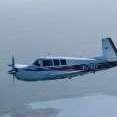




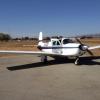

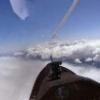





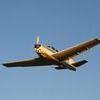





.thumb.png.7c67574d7b28f67b0b4a17760919b1ac.png)














